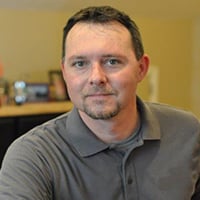Obvious-But-Not-Obvious: A Big-Picture View of Biological Wastewater Treatment
Posted on
Many of us have mentors that we look up to as wise practitioners and professional counsellors during our formative years as young engineers. These folks often have small tidbits of knowledge that transform how we think about a particular topic. I would like to share a few special pieces of wisdom that have been shared with me over the years.
Early in my career I was struggling to understand the big picture behind wastewater treatment:
How does adding air to a tank fundamentally drive microorganisms to treat wastewater?
It seems silly looking back, and me not having strong background in biology or chemistry, a mentor of mine said something along the lines of: As wastewater professionals, our job is to cultivate the biological population WE want by creating the environments THEY want. BINGO!
This was a real paradigm shift for me, and it helped me understand the big picture view of wastewater treatment, particularly when troubleshooting biological systems. The bugs are our workhorse, so we should give them what they want. What DOES the microbiology want? The same things WE (people) want! Food + Water + Shelter = Happy People! So for microbiology the formula would be: Waste + Water + Tank = Happy Bugs!
This is where the term “Big, Dumb, and Happy” comes from. We want our biology to eat well, respirate (or not), grow, and be happy. Then, they will do the work we want which is reducing the pollutants to acceptable levels in the effluent.
I think about this a lot in my work as Wastewater Engineer here at Infiltrator Water Technologies. We are regularly asking “what conditions do we need to grow bugs to get the outcome we want?”
Treating for biochemical oxygen demand?
Wastewater + Oxygen + Time = Happy Bugs.
Treating for ammonia nitrogen?
Wastewater + (more) Oxygen + (more) Time = Happy Bugs + Nitrate.
Treating for total nitrogen?
Nitrate + (some) Carbon + Mixing = Happy Bugs + N2(g).
This works not only for design, but for troubleshooting existing wastewater treatment systems as well.
Theoretical Scenario: There is a problem with the effluent numbers of a wastewater treatment system... (Correction, here is another nugget from a different mentor: There are no problems, only challenges!) What conditions have we created in the tank? If the system fails to nitrify, is there enough air? Alkalinity? Correct pH? These questions center around the fundamental issue, “have we created the right environment to grow Happy Bugs?”
This conversation reminds me of a particular challenge at a small facility where the effluent waste strength was the same as the influent waste strength. We validated the “on paper” values for wasteload, oxygen delivery, temperature, and tankage. A site representative checked physical aspects of the layout, piping runs, blower pulley sizes, water depths. Alkalinity was good. Influent flow (pump timing) was reasonably accurate. So, why was this plant not treating water? The answer: Quaternary Ammonium, a.k.a. quats. A high concentration of this particularly effective disinfectant in the waste stream was suppressing biological activity. In other words, we did not cultivate an environment the bugs needed to be Big, Dumb, and Happy. An obvious-but-not-so-obvious easy fix.
As we tackle the most pressing environmental issues of our day with an army of microbiological soldiers, never forget to ask yourself the obvious-but-not-obvious question, “have I created the environment I need to grow Big, Dumb, and Happy bugs?”
About the Author:
 Aaron Burke, P.E.
Aaron Burke, P.E.
Wastewater Engineer
Aaron brings 17 years of experience to the Technical Services team at Infiltrator Water Technologies. He has worked in administrative project management, construction, engineering design, and has started two wholly owned companies. His expertise is in wastewater treatment process design and treatment plant operations. Aaron holds a Bachelor’s degree in Civil Engineering from Rose-Hulman Institute of Technology and a Master’s of Engineering in Civil Engineering from Norwich University, and is a licensed professional engineer, LEED accredited professional, and certified wastewater operator.
Contact us if you have any questions about this blog post.
